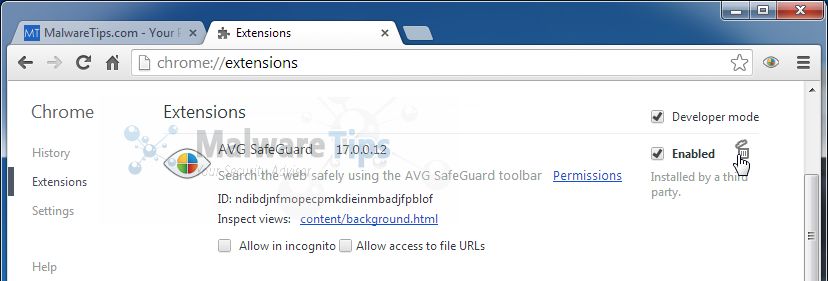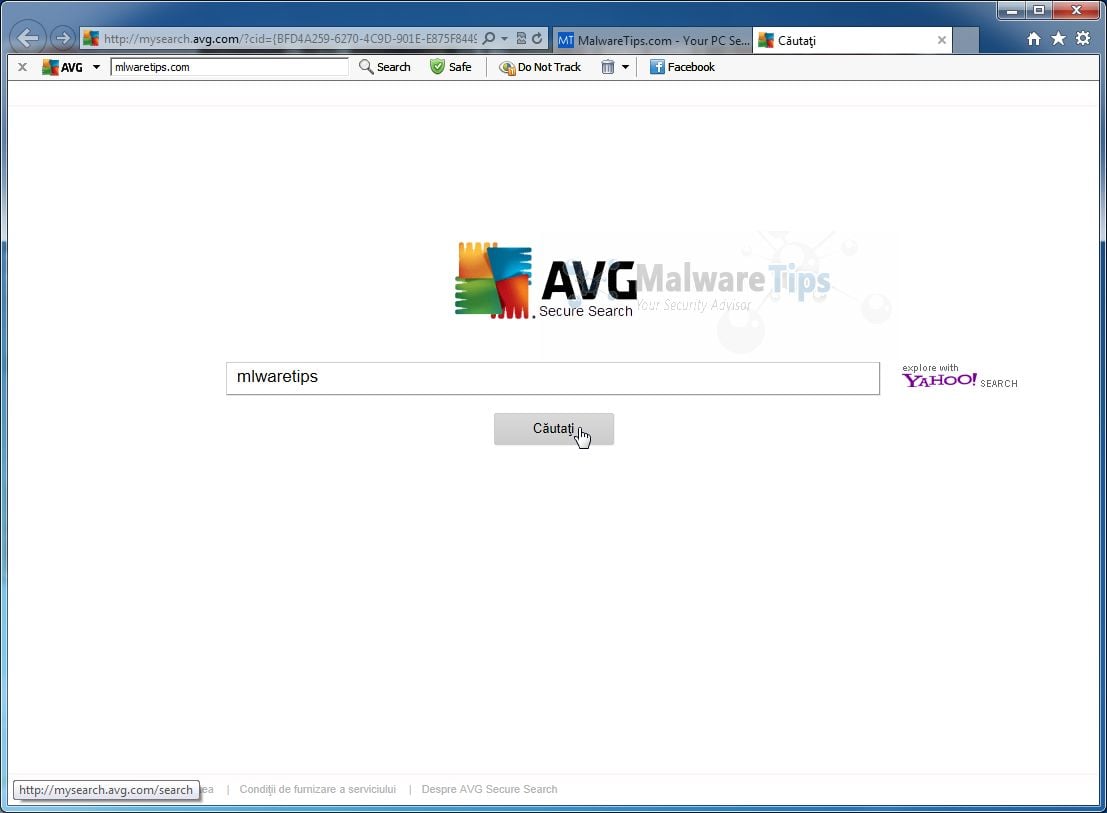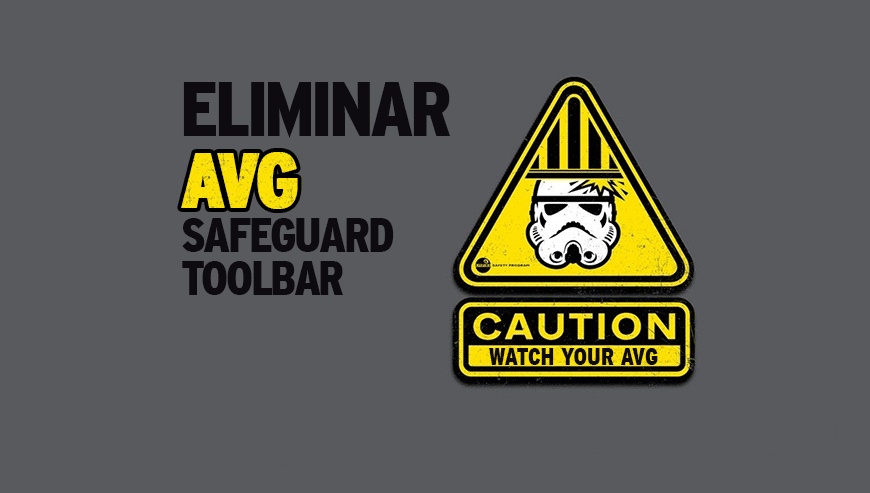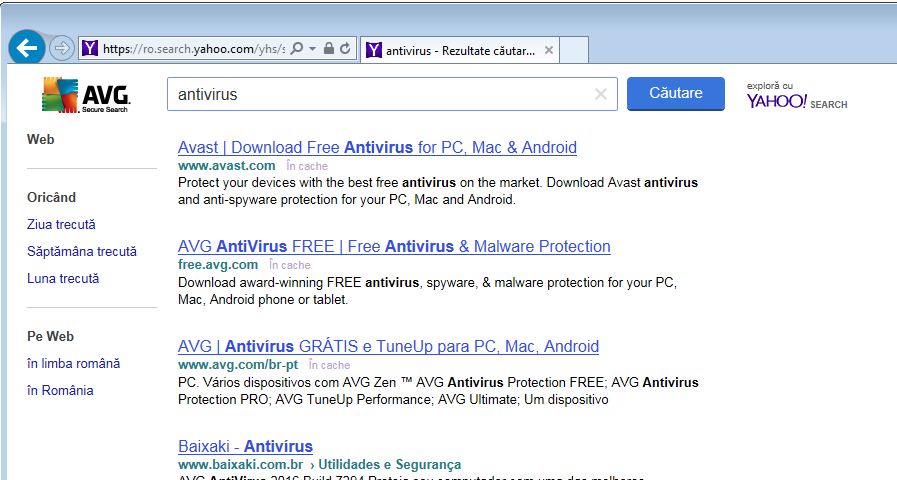Toolbar Remover: removes unwanted. AVG's antivirus software is safe. All of AVG's antivirus software packages, including its AntiVirus Free offering, include basic virus, spyware, email. System Win 10 Int Expl 11-Both Toolbar and sec search not active- both installed. Toolbar in c/program Files.4.33MB. In browser tool tab not activ. Still see AVG Protection and AVG SafeGuard Toolbar in the App list. Also, Task Manager shows background tasks AVG Antivirus (32 bit), AVG Identity Protection Service and AVG service (32 bit). Windows 10 latest. My objective was to replace the 32 bit version with the 64 bit version and saw in forum that AVGremover was necessary to prepare. AVG's antivirus software is safe. All of AVG's antivirus software packages, including its AntiVirus Free offering, include basic virus, spyware, email phishing, and ransomware protections.
AVG search redirect removal instructions
What is is AVG search?
AVG Search redirect is a term used by Internet users who have installed AVG antivirus software, and thus, experience browser (Internet Explorer, Google Chrome, and Mozilla Firefox) redirects to mysearch.avg.com or isearch.avg.com These browser redirects are caused by AVG toolbar, which installs on users' computers together with AVG antivirus. Note that users have an option to opt-out of installation of these toolbars by unchecking several options when installing the software. Unfortunately, however, the majority of Internet users do not pay close enough attention during the installation phase, thus inadvertently install various toolbars, which modify the Internet browser settings (specifically, the homepage and default search engine).
The Mysearch.avg.com and isearch.avg.com websites use the Google and Yahoo! search engines to return legitimate Internet search results, however, they add little significant value and are used only to monetize incoming web traffic. Note that, today, the majority of download websites and freeware developers 'bundle' their software downloads with various toolbars and free browser add-ons, and therefore, these browser add-ons are often categorized as potentially unwanted applications or adware. Whilst AVG antivirus is a legitimate security program, Internet users should be attentive during installation in order to avoid unwanted browser redirects - ensure you opt out of installation of AVG toolbar.
AVG toolbar is categorized as being adware since it modifies browser settings and generates coupon ads (AVG Rewards). This toolbar is similar to other potentially unwanted applications such as Ask toolbar and Conduit toolbar, amongst many others. Internet users who wish to avoid installation of these toolbars, should pay close attention when downloading and installing free software. If your download is managed by a 'download client', opt-out of installation of any promoted browser add-ons by clicking the 'decline' button. When installing free software, choose the 'Advanced' or 'Custom' installation options - this will reveal any bundled browser toolbars or plugins. If your Internet browser/s redirect you to mysearch.avg.com or isearch.avg.com, use the removal guide provided to eliminate AVG toolbar from your computer.

Deceptive free software installers used in mysearch.avg.com browser hijacker distribution:
Instant automatic malware removal:Manual threat removal might be a lengthy and complicated process that requires advanced computer skills. Malwarebytes is a professional automatic malware removal tool that is recommended to get rid of malware. Download it by clicking the button below:
▼ DOWNLOAD MalwarebytesBy downloading any software listed on this website you agree to our Privacy Policy and Terms of Use. To use full-featured product, you have to purchase a license for Malwarebytes. 14 days free trial available.
Quick menu:
- STEP 1. Uninstall AVG SafeGuard toolbar applications using Control Panel.
- STEP 2. Remove AVG Search redirect from Internet Explorer.
- STEP 3. Remove AVG Search browser hijacker from Google Chrome.
- STEP 4. Remove AVG Search homepage and default search engine from Mozilla Firefox.
- STEP 5. Remove AVG Search redirect from Safari.
- STEP 6. Remove rogue plug-ins from Microsoft Edge.

AVG search redirect removal:
Windows 7 users:
Click Start (Windows Logo at the bottom left corner of your desktop), choose Control Panel. Locate Programs and click Uninstall a program.
Windows XP users:
Click Start, choose Settings and click Control Panel. Locate and click Add or Remove Programs.
Windows 10 and Windows 8 users:
Right-click in the lower left corner of the screen, in the Quick Access Menu select Control Panel. In the opened window choose Programs and Features.
Mac OSX users:
Click Finder, in the opened screen select Applications. Drag the app from the Applications folder to the Trash (located in your Dock), then right click the Trash icon and select Empty Trash.
In the uninstall programs window: look for 'AVG SafeGuard toolbar', select it click 'Uninstall' or 'Remove'.
After uninstalling the AVG SafeGuard toolbar (which causes browser redirects to the mysearch.avg.com website), scan your computer for any remaining unwanted components. To scan your computer, use recommended malware removal software. Remove all entries that this program detects to ensure your PC is clean from any possible spyware and malware infections.
Malwarebytes checks if your computer is infected with malware. To use full-featured product, you have to purchase a license for Malwarebytes. 14 days free trial available.
AVG search redirect removal from browsers:
Video showing how to remove potentially unwanted browser add-ons:
Remove malicious add-ons from Internet Explorer:
Click on the 'gear' icon (at the top right corner of Internet Explorer) select 'Manage Add-ons'. Look for 'AVG SafeGuard toolbar' and 'ScriptHelperApi Class', select these entries and click 'Remove'.
Change homepage:
To change your homepage from mysearch.avg.com to your preferred domain, click on the 'gear' icon (at the top right corner of Internet Explorer) select 'Internet Options', in the opened window remove mysearch.avg.com and enter your preferred domain, which will open each time you launch Internet Explorer.
Change default search engine:
Click on the 'gear' icon (at the top right corner of Internet Explorer) select 'Manage Add-ons'. In the opened window select 'Search Providers', set 'Google', 'Bing' or any other preferred search engine as your default and then remove 'AVG Secure Search'.
Optional method:
If you continue to have problems with removal of the avg safe guard toolbar, reset your Internet Explorer settings to default.
Windows XP users: Click Start, click Run, in the opened window type inetcpl.cpl In the opened window click the Advanced tab, then click Reset.
Windows Vista and Windows 7 users: Click the Windows logo, in the start search box type inetcpl.cpl and click enter. In the opened window click the Advanced tab, then click Reset.
Windows 8 users: Open Internet Explorer and click the gear icon. Select Internet Options.
In the opened window, select the Advanced tab.
Click the Reset button.
Confirm that you wish to reset Internet Explorer settings to default by clicking the Reset button.
Remove malicious extensions from Google Chrome:
Click the Chrome menu icon (at the top right corner of Google Chrome) select 'Tools' and click on 'Extensions'. Locate 'AVG SafeGuard', select it and click on the trash can icon.
Change homepage:
Change Google Chrome homepage from mysearch.avg.com to your preferred domain- click the Chrome menu icon (at the top right corner of Google Chrome) select 'Settings'. In the 'On startup' section click 'set pages', hover your mouse over 'Search' and click the x symbol. Now you can add your preferred website as your homepage.
Change default search engine:
To change your default search engine in Google Chrome: Click the Chrome menu icon (at the top right corner of Google Chrome) select 'Settings', in the 'Search' section click 'Manage Search Engines...', remove 'AVG Secure Search' and add or select your preferred domain.
Optional method:
If you continue to have problems with removal of the avg safe guard toolbar, reset your Google Chrome browser settings. Click the Chrome menu icon (at the top right corner of Google Chrome) and select Settings. Scroll down to the bottom of the screen. Click the Advanced… link.
After scrolling to the bottom of the screen, click the Reset (Restore settings to their original defaults) button.
In the opened window, confirm that you wish to reset Google Chrome settings to default by clicking the Reset button.
Remove malicious plugins from Mozilla Firefox:
Click on the Firefox menu (at the top right corner of the main window) select 'Add-ons'. Click on 'Extensions' and remove 'AVG SafeGuard toolbar'.
Change homepage:
To reset your homepage, click on the Firefox menu (at the top right corner of the main window) then select 'Options', in the opened window remove mysearch.avg.com and enter your preferred domain.
Change default search engine:
In the URL address bar, type about:config and press Enter.
Click 'I'll be careful, I promise!'.
In the search filter at the top, type: 'mysearch.avg.com'
Right-click on the found preferences and select 'Reset' to restore default values.
Optional method:
Computer users who have problems with avg safe guard toolbar removal can reset their Mozilla Firefox settings.
Open Mozilla Firefox, at the top right corner of the main window, click the Firefox menu, in the opened menu, click Help.
Select Troubleshooting Information.
In the opened window, click the Refresh Firefox button.
In the opened window, confirm that you wish to reset Mozilla Firefox settings to default by clicking the Refresh Firefox button.
Remove malicious extensions from Safari:
Make sure your Safari browser is active and click Safari menu, then select Preferences...
In the preferences window select the Extensions tab. Look for any recently installed suspicious extensions and uninstall them.
In the preferences window select General tab and make sure that your homepage is set to a preferred URL, if its altered by a browser hijacker - change it.
In the preferences window select Search tab and make sure that your preferred Internet search engine is selected.
Optional method:
Make sure your Safari browser is active and click on Safari menu. From the drop down menu select Clear History and Website Data...
In the opened window select all history and click the Clear History button.
Remove malicious extensions from Microsoft Edge:
Click the Edge menu icon (at the top right corner of Microsoft Edge), select 'Extensions'. Locate any recently-installed suspicious browser add-ons, and remove them.
Change your homepage and new tab settings:
Click the Edge menu icon (at the top right corner of Microsoft Edge), select 'Settings'. In the 'On startup' section look for the name of the browser hijacker and click 'Disable'.
Change your default Internet search engine:
To change your default search engine in Microsoft Edge: Click the Edge menu icon (at the top right corner of Microsoft Edge), select 'Privacy and services', scroll to bottom of the page and select 'Address bar'. In the 'Search engines used in address bar' section look for the name of the unwanted Internet search engine, when located click the 'Disable' button near it. Alternatively you can click on 'Manage search engines', in the opened menu look for unwanted Internet search engine. Click on the puzzle icon near it and select 'Disable'.
Optional method:

If you continue to have problems with removal of the avg safe guard toolbar, reset your Microsoft Edge browser settings. Click the Edge menu icon (at the top right corner of Microsoft Edge) and select Settings.
In the opened settings menu select Reset settings.
Select Restore settings to their default values. In the opened window, confirm that you wish to reset Microsoft Edge settings to default by clicking the Reset button.
- If this did not help, follow these alternative instructions explaining how to reset the Microsoft Edge browser.
Summary:
A browser hijacker is a type of adware infection that modifies Internet browser settings by assigning the homepage and default Internet search engine settings to some other (unwanted) website URL. Commonly, this type of adware infiltrates operating systems through free. software downloads. If your download is managed by a download client, ensure that you decline offers to install advertised toolbars or applications that seek to change your homepage and default Internet search engine settings.
Removal assistance:
If you are experiencing problems while trying to remove avg safe guard toolbar from your Internet browsers, please ask for assistance in our malware support forum.
Post a comment:
If you have additional information on avg safe guard toolbar or it's removal please share your knowledge in the comments section below.
yes, i also got these avg redirects when i downloaded from CNET. ty for the help.
| Developer(s) | AVG Technologies |
|---|---|
| Stable release |
19.3.3084 (March 11, 2019; 20 months ago[1])
|
| Operating system | Windows XP and later, macOS, Android |
| Type | Antivirus software |
| License | Freemium |
| Website | avg.com |
AVG AntiVirus (previously known as AVG, an abbreviation of Anti-Virus Guard) is a line of antivirus software developed by AVG Technologies, a subsidiary of Avast.[3][4] It is available for Windows, macOS and Android.
History
The brand AVG comes from Grisoft's first product, Anti-Virus Guard, launched in 1992 in the Czech Republic. In 1997, the first AVG licenses were sold in Germany and the UK. AVG was introduced in the US in 1998.[5]
The AVG Free Edition helped raise awareness of the AVG product line.[6] In 2006, the AVG security package grew to include anti-spyware as AVG Technologies acquired ewido Networks, an anti-spyware group. AVG Technologies acquired Exploit Prevention Labs (XPL) in December 2007 and incorporated that company's LinkScanner safe search and surf technology into the AVG 8.0 security product range released in March 2008. In January 2009, AVG Technologies acquired Sana Security, a developer of identity theft prevention software. This software was incorporated into the AVG security product range in March 2009.
According to AVG Technologies, the company has more than 200 million active users worldwide, including more than 100 million who use their products and services on mobile devices.[7]
On 7 July 2016, Avast announced an agreement to acquire AVG for $1.3 billion.[8]

Platform support
AVG provides AVG AntiVirus Free for Windows, AVG AntiVirus for Mac for macOS and AVG AntiVirus for Android for Android devices. All are freemium products: They are free to download, install, update and use, but for technical support a premium plan must be purchased.
AVG stopped providing new features for Windows XP and Windows Vista in January 2019. New versions require Windows 7 or later; virus definitions are still provided for previous versions.[9]
Features
AVG features most of the common functions available in modern antivirus and Internet security programs, including periodic scans, scans of sent and received emails (including adding footers to the emails indicating this), the ability to repair some virus-infected files, and a quarantine area (virus vault) in which infected files are held.
LinkScanner
The patent pending LinkScanner technology acquired from Exploit Prevention Labs and built into most AVG products, provides real-time updated protection against exploits and drive-by downloads. LinkScanner includes: Search-Shield – a safe search component that places safety ratings next to each link in Google, Yahoo! and MSN search results; plus Active Surf-Shield – a safe surf component that scans the contents of a web site in real-time to ensure it's safe being opened.[10] Concerns regarding web analytics have made LinkScanner a controversial component (see 'LinkScanner concerns' below).
LinkScanner concerns
When AVG 8.0 was first released, its LinkScanner safe search feature was shown to cause an increase in traffic on websites that appear high in search engine results pages. Since LinkScanner disguises the scans as coming from an Internet Explorer 6 browser when it prescans each site listed in the search results, we site usage logs showed incorrect and overinflated site visitor statistics. The prescanning of every link in search results also caused websites to transfer more data than usual, resulting in higher bandwidth usage for web site operators and slow performance for users.[11] AVG initially said that site administrators would be able to filter the LinkScanner traffic out of their site statistics, leaving the problem of excess bandwidth usage still to be solved.[12] Pay-per-click advertising was not affected by the increase in traffic.[13]
AVG Online Shield
AVG Online Shield is a feature designed to check files and ensure that they are safe. AVG Online Shield also ensures the safety of exchanging files via instant messengers and VoIP clients.[14]
In response to complaints, AVG announced that as of 9 July 2008 'Search-Shield will no longer scan each search result online for new exploits, which was causing the spikes that webmasters addressed with us',[15] releasing a new build on that date that applies a local blacklist, then prefetches and scans only those links clicked on by the user.[16]

Controversy
As of 2014, there are numerous reports dating back to 2012 that the AVG SafeGuard Toolbar installs itself without the consent of the user, as a side effect of installing other applications. The toolbar program appears to cause significant RAM issues and can be considered an intrusive potentially unwanted program (PUP). Once installed, the AVG toolbar is virtually impossible to remove. The toolbar uninstaller does not function, instead re-installing the add-on if manually removed. Consequently, many discussions and blog posts have described complex procedures for removal of the AVG toolbar, each with very mixed results.[17][18][19][20][21][22]
In September 2015, AVG announced that it would start tracking users for profit, analyzing their data for sale to the advertising industry. This measure received criticism from consumers, the press and security industry, as many users intended to use the software in order to protect themselves from spyware and would not expect the functions of spyware to be 'hidden' in security software.[23]
In December 2015, the AVG Web TuneUp Google Chrome extension (automatically installed with AVG AntiVirus) was revealed to contain multiple critical security vulnerabilities.[24] Most notably, Chrome users' browsing history could be exposed to any website, cookies from any site the user has visited could be read by an attacker, and trivial cross-site scripting (XSS) issues could allow any website to execute arbitrary code (as another domain).
The XSS vulnerability allowed a user's mail from 'mail.google.com' to be read by any website, or financial information to be read from the user's online banking site. The AVG team fixed this by only allowing 'mysearch.avg.com' and 'webtuneup.avg.com' to execute these scripts. Despite this remediation, attackers could leverage any of these attacks if an XSS vulnerability was found on the AVG sites. As of April 2016, Web TuneUp was still not available for download from the AVG website.
Reception
Avg Security Toolbar
AVG Antivirus Free 2012 was selected as PC Magazine Editors' Choice in the free antivirus category.[25] AVG AntiVirus Free 2015 received the Editor Choice badge of SoftChamp.[26]
See also
References
- ^'AVG Antivirus Free'. web site. 19 February 2019. Retrieved 21 February 2019.
- ^'AVG AntiVirus 2019 for Android Security FREE'. Google Play Store. 19 February 2019. Retrieved 21 February 2019.
- ^'Avast Closes Acquisition of AVG Technologies'. Business Wire. 30 September 2016. Retrieved 31 October 2016.
- ^'FREE 2016: Developer: Avast Software s.r.o.'Google Play. Retrieved 31 October 2016.
- ^'AVG Technologies Celebrates 15 Years of Internet Security Success'. Avg.com. Archived from the original on 2 May 2009. Retrieved 22 November 2012.
- ^'GRISOFT viert 15 jaar van successen met internetbeveiliging | AVG Nederland'. Avg.com. 5 December 2006. Archived from the original on 2 May 2009. Retrieved 22 November 2012.
- ^'AVG Surpasses 200 Million Users Worldwide'. Now.avg.com. Retrieved 11 March 2015.
- ^'Archived copy'. Archived from the original on 24 March 2017. Retrieved 28 April 2017.CS1 maint: archived copy as title (link)
- ^'AVG ends support for Windows XP & Windows Vista'. AVG Blogs. AVG Technologies. 31 October 2018. Retrieved 30 January 2019.
- ^'Veelgestelde vragen | AVG Nederland'. Avg.com. Retrieved 22 November 2012.
- ^'AVG Disguises Fake Traffic As IE6'. Theregister.co.uk. Retrieved 22 November 2012.
- ^'AVG update disguises LinkScanner traffic as IE6'. Techspot.com. Retrieved 22 November 2012.
- ^'LinkScanner could be behind surge in web traffic'. virusbulletin.com. Retrieved 30 September 2018.
- ^'AVG security features'. AVG.com. Retrieved 10 February 2015.
- ^'AVG Responds to Fake Traffic Spikes'. Networkinstruments.wordpress.com. Retrieved 22 November 2012.
- ^'Grisoft modifies its free AVG product after complaints'. News.cnet.com. Retrieved 22 November 2012.
- ^''AVG Secure Search' is obviously a kind of malware that attaches itself to FF. Is Mozilla working on killing it?'. Retrieved 17 December 2015.
- ^'AVG Toolbar & Secure Search: How do I remove it from my browser & PC?'. ReviverSoft Blog. Retrieved 17 December 2015.
- ^'How to remove Nation Toolbar — Search.nation.com redirect (Removal) - Tech & Internet Security — News & Guides'. Retrieved 17 December 2015.
- ^'How to Remove AVG SafeGuard Toolbar and AVG Secure Search'. Archived from the original on 9 January 2016. Retrieved 17 December 2015.
- ^Completely Remove AVG safeguard toolbar
- ^Emil Protalinski. 'AVG Security Toolbar is the worst foistware I've ever seen'. ZDNet. Retrieved 17 December 2015.
- ^Beuth, Patrick. 'Antivirensoftware benimmt sich künftig wie Spyware'. ZEIT ONLINE. Retrieved 23 September 2015.
- ^'Issue 675: AVG: 'Web TuneUP' extension multiple critical vulnerabilities'. 15 December 2015. Retrieved 29 December 2015.
- ^Rubenking, Neil J. 'AVG Anti-Virus Free 2012 Review & Rating'. PCMag.com. Retrieved 22 November 2012.
- ^'Download AVG AntiVirus Free'. SoftChamp.com. Retrieved 16 February 2015.
Avg Safeguard Toolbar Remove
External links
Uninstall Avg Safeguard Toolbar
